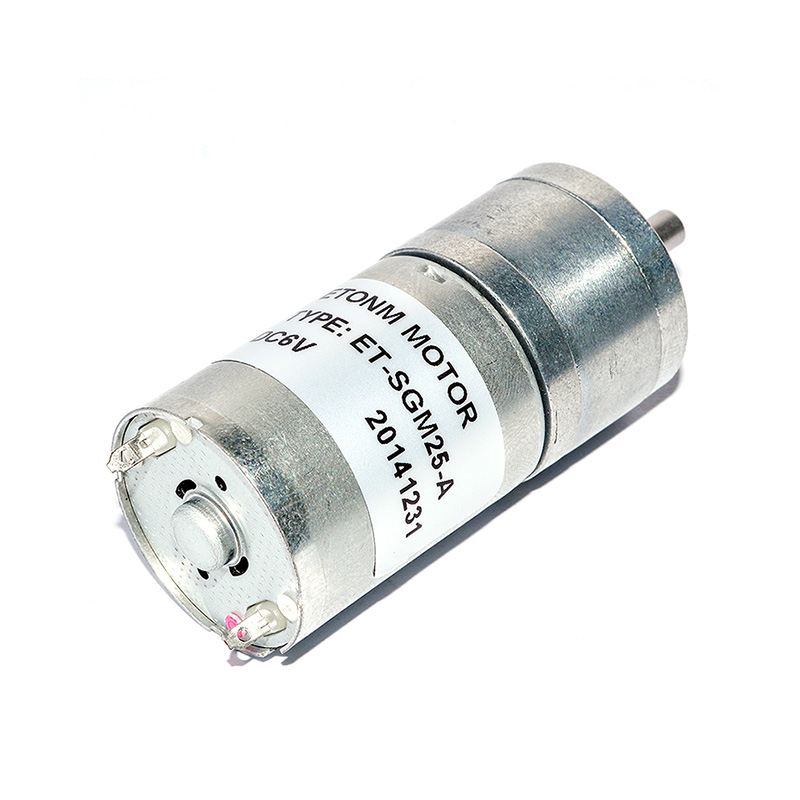CONTACT US
Method for improving commutation of dc gearmotor
- Categories:INDUSTRY NEWS
- Author:
- Origin:
- Time of issue:2022-01-10
- Views:0
Method for improving commutation of dc gearmotor
There are mainly the following methods to improve the commutation of dc gearmotor:

1. Install the commutator pole
The manufacturer of dc gearmotor tells you that at present, the effective method is to install the commutator pole. In order to eliminate the adverse effects of the induced electromotive force and cut off the electromotive force in the commutation device, the commutation pole is used, and the magnetic core is called the commutation pole core. The N and S main pole geometric neutral lines are set between the commutation poles. The direction pole is connected in series with the armature winding, the armature current is excited, and the direction of the magnetic pole is reversed to generate the magnetomotive force opposite to the armature. In addition to overcoming the armature reaction magnetomotive force, it is also established in the air gap where the commutation element is located. Commutation magnetic field Bk. The commutation element cuts off Bk and generates a commutation electromotive force Ek. The direction of Ek is opposite to the direction of Er+Ea to offset the effect of Er+Ea and improve the commutation performance.
Since Er+Ea is proportional to the armature current, the commutation pole magnetic field that generates Ek should also be proportional to the armature current. Therefore, the commutation winding is connected in series with the armature winding, and the commutation magnetic circuit should not be saturated. The dc gearmotor manufacturer tells you that in order to maintain the unsaturation of the commutator magnetic circuit, a non-magnetic adjustment plate of appropriate thickness is usually inserted between the yoke and the commutator pole core.
Now, DC motors above 1kW are equipped with commutator poles.
2. Choose the right brush
The manufacturer of dc gearmotor tells you that there is contact resistance between the brush and the commutator, which can reduce the additional current and improve the performance of the commutator. DC motors do not use metal brushes with low contact resistance, but instead use carbon brushes and graphite brushes. However, you cannot choose a brush with a large resistance at will, otherwise the contact pressure drop between the brush and the commutator will increase, the commutator will generate more heat and the power loss will be greater.
3. Compensation winding
The dc gearmotor manufacturer tells you that the commutator pole overcomes the influence of the armature reaction magnetic field where the commutator element is located, and the armature reaction beyond this point still exists. If this effect is strong, the magnetic flux on both sides of the magnetic pole will have different effects. The dc gearmotor manufacturer tells you that if the magnetic flux density at the magnetic pole shoe is high, the armature winding voltage at that position is too high, and the voltage difference between the commutator segments connected to it will cause sparks. At this time, the compensation winding is arranged in series with the armature winding at the pole piece of the main magnetic pole, and the armature current flows through the compensation winding, which can completely eliminate the armature reaction. Compensation windings are actually only used for large DC motors.
4. Move the brush position
The manufacturer of dc gearmotor tells you that in a small-capacity DC motor without a commutator pole, the brush can be moved at an appropriate angle from the geometric neutral line to improve the commutation. For generators, the brushes move along the armature, for motors, the brushes move along the armature. Therefore, the commutation element leaves the geometric neutral line and enters the main magnetic pole. The manufacturer of dc gearmotor tells you to use the main magnetic pole to replace the directional magnetic pole, the induced electromotive force EF and ER are equal in magnitude, opposite in direction, and cancel each other, so as to achieve the purpose of improving commutation.
The dc gearmotor manufacturer tells you that the disadvantage of this method is that after the brushes leave the geometric neutral line, a direct-axis armature magnetomotive force that demagnetizes the main magnetic field will be generated. Secondly, since ER changes with the size of the load, EF should also change with the size of the load, which requires the moving angle of the brush to change with the size of the load, which is impossible. Therefore, this method is only suitable for motors with small load changes.
The above analysis is based on the complete contact between the commutator surface and the brush. However, the actual surface of the commutator is always impossible to be round and dusty. The brushes of the high-speed dc gearmotor still bounce, especially the vibration of the railway motor itself. In these occasions, it is usually necessary to design a larger commutator electromotive force. The direct current motor whose load changes sharply should also be designed to have a larger commutation electromotive force.
Copyright ©Etonm Motor Co., Limited. 粤ICP备15002344号 SEO Tab Navigation



